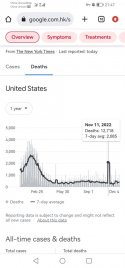Comorbidities were addressed in the HK mortality paper I posted:
I wasn’t referring to this paper but the MOH news That you posted previously. Again in the HK mortalities paper, the two vaccines were the same statistically in preventing deaths. Their confidence intervals overlapped.
That observation regarding 18-50 mortality after 3 doses is the only time I've ever seen inactivated vaccines showing superiority over mRNA. It doesn't hold true for any of the other age groups regarding severity or mortality, or for those who received 1-2 doses
My point was there was no difference statistically. Both were similar in preventing death from COVID at 3 doses Which is what counts.
Again the Singaporean study that you posted previously used population data and could not control for co morbidities. Not a lot of people used the inactivated vaccines and those that chose inactivated likely had not comobidities as shown in the HK side effect study you posted. Having those comorbidities will certainly decrease immune response and I suspect faster antibody waning.In this thread I'm attempting to refute the claim that inactivated vaccines are superior. They have acceptable efficacy against severity and mortality after 3 doses. The study from Singapore suggests after 3 doses inactivated vaccines wane faster and more significantly than mRNA vaccines. So I'd hesitate to say they're on par, only that they are acceptable for surviving a few waves not long after vaccination (for those vulnerable in the first place).
Time will tell. Looks like they are on their way to catch up.My main point overall is that the rate of older age groups who received 2 doses, let alone 3 doses, is too low in China for the mortality figures currently being released to be credible or representative of the near future.
Last edited:

